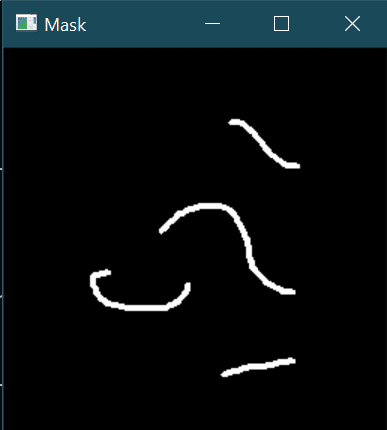In today’s blog, we will see that how we can repair damaged images in Python using inpainting methods of OpenCV. This is gonna be a very fun project, So without any further due, let’s dive into it.
Image inpainting is the process of removing damage, such as noises, strokes, or text, on images. It is particularly useful in the restoration of old photographs which might have scratched edges or ink spots on them. These can be digitally removed through this method.
This is going to be a very interesting blog, so without any further due, Let’s do it…
Step 1 – Let’s import the libraries.
import cv2 import matplotlib.pyplot as plt
Step 2 – Read the damaged image.
damaged_image_path = "Damaged Image.tiff" damaged_image = cv2.imread(damaged_image_path)

Step 3 – Read the mask.
mask_path = "Mask.tiff" mask = cv2.imread(mask_path, 0)
- Here we are reading our mask in grayscale mode.
- Mask is basically a binary image in which the white portion depicts the pixels or places where our original image is damaged.

Step 4 – Convert the damaged image from BGR to RGB.
damaged_image = cv2.cvtColor(damaged_image, cv2.COLOR_BGR2RGB)
Here we are just converting our image from BGR to RGB because cv2 automatically reads the image in BGR format.
Step 5 – Let’s repair damaged images.
Syntax: cv2.inpaint(src, inpaintMask, inpaintRadius, flags)
Parameters:
| src | Input damaged image |
| inpaintMask | Inpainting mask, 8-bit grayscale image. Non-zero pixels indicate the area that needs to be inpainted. |
| inpaintRadius | Radius of a circular neighborhood of each point inpainted that is considered by the algorithm. |
| flags | Inpainting method that could be cv::INPAINT_NS or cv::INPAINT_TELEA |
output1 = cv2.inpaint(damaged_image, mask, 1, cv2.INPAINT_TELEA) output2 = cv2.inpaint(damaged_image, mask, 1, cv2.INPAINT_NS)
Step 6 – Let’s plot the results.
img = [damaged_image, mask, output1, output2]
titles = ['damaged image', 'mask', 'TELEA', 'NS']
for i in range(4):
plt.subplot(2, 2, i+1)
plt.xticks([])
plt.yticks([])
plt.title(titles[i])
plt.imshow(img[i])
plt.show()

Let’s see the whole code…
# repair damaged images
import cv2
import matplotlib.pyplot as plt
damaged_image_path = "Damaged Image.tiff"
damaged_image = cv2.imread(damaged_image_path)
mask_path = "Mask.tiff"
mask = cv2.imread(mask_path, 0)
damaged_image = cv2.cvtColor(damaged_image, cv2.COLOR_BGR2RGB)
output1 = cv2.inpaint(damaged_image, mask, 1, cv2.INPAINT_TELEA)
output2 = cv2.inpaint(damaged_image, mask, 1, cv2.INPAINT_NS)
img = [damaged_image, mask, output1, output2]
titles = ['damaged image', 'mask', 'TELEA', 'NS']
for i in range(4):
plt.subplot(2, 2, i+1)
plt.xticks([])
plt.yticks([])
plt.title(titles[i])
plt.imshow(img[i])
plt.show()
NOTE – Read more about cv2.inpaint().
Do let me know if there’s any query regarding repair damaged images by contacting me by email or LinkedIn.
So this is all for this blog folks, thanks for reading it and I hope you are taking something with you after reading this and till the next time ?…
Read my previous post: HOW TO GENERATE A NEGATIVE IMAGE IN PYTHON USING OPENCV
Check out my other machine learning projects, deep learning projects, computer vision projects, NLP projects, Flask projects at machinelearningprojects.net.

how to get a mask of a image ???